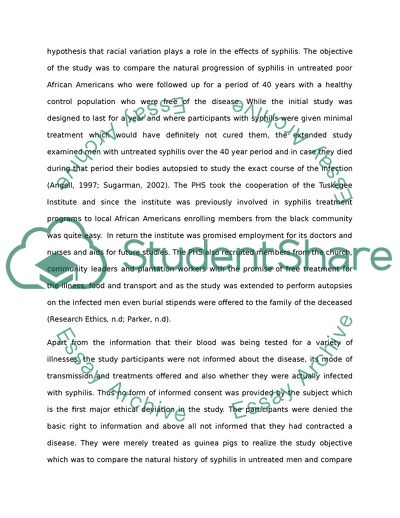Cite this document
(Conflict Between Researh and Ethics on the Tuskegee Syphilis Study Essay, n.d.)
Conflict Between Researh and Ethics on the Tuskegee Syphilis Study Essay. https://studentshare.org/humanitarian/1733719-conflict-between-researh-and-ethics-on-the-tuskegee-syphilis-study
Conflict Between Researh and Ethics on the Tuskegee Syphilis Study Essay. https://studentshare.org/humanitarian/1733719-conflict-between-researh-and-ethics-on-the-tuskegee-syphilis-study
(Conflict Between Researh and Ethics on the Tuskegee Syphilis Study Essay)
Conflict Between Researh and Ethics on the Tuskegee Syphilis Study Essay. https://studentshare.org/humanitarian/1733719-conflict-between-researh-and-ethics-on-the-tuskegee-syphilis-study.
Conflict Between Researh and Ethics on the Tuskegee Syphilis Study Essay. https://studentshare.org/humanitarian/1733719-conflict-between-researh-and-ethics-on-the-tuskegee-syphilis-study.
“Conflict Between Researh and Ethics on the Tuskegee Syphilis Study Essay”. https://studentshare.org/humanitarian/1733719-conflict-between-researh-and-ethics-on-the-tuskegee-syphilis-study.


